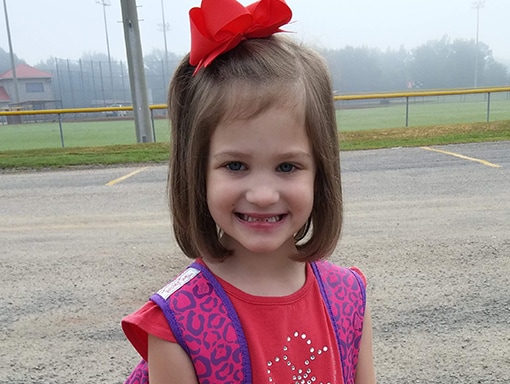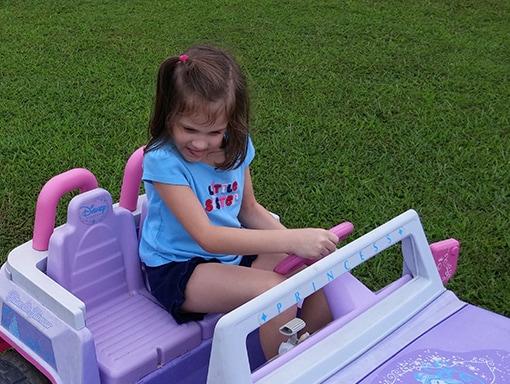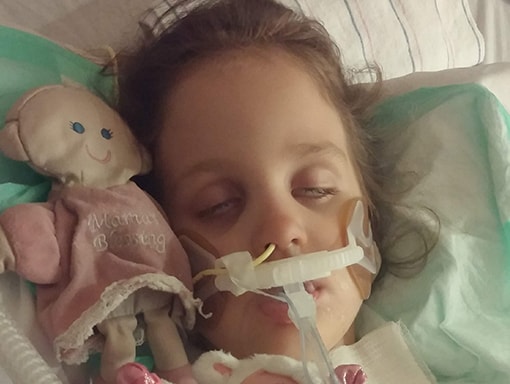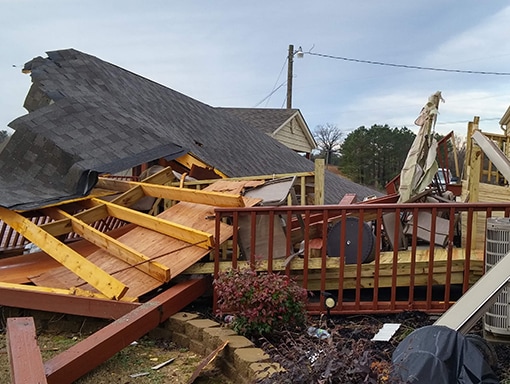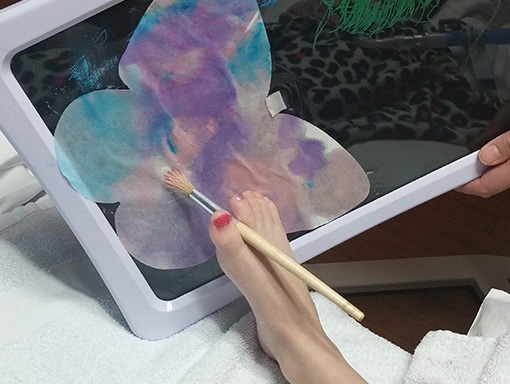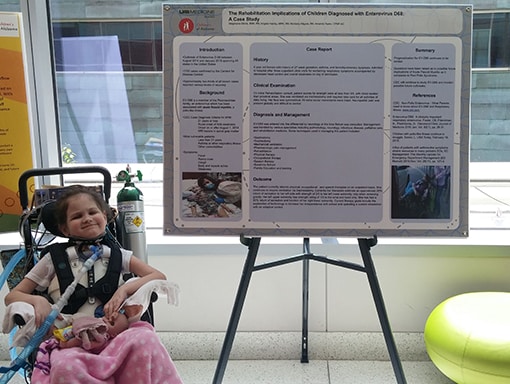Kinley’s Story
Kinley is an 11-year-old who enjoys making art, playing video games, and spending time with her family in Gardendale, Alabama. When she was 5 years old, Kinley developed AFM, resulting in paralysis in all four limbs. She’s continuing to make steady progress.
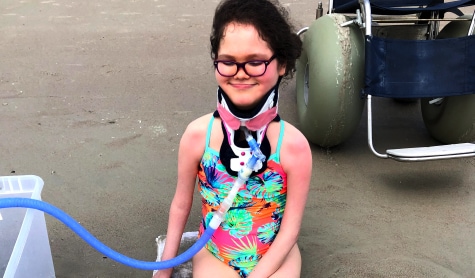
One weekend in September 2014, Kinley developed a bad headache. By Monday morning, she felt even worse and didn’t want to eat. Kinley’s mom Kim took her to her pediatrician, who suspected a stomach bug and sent them home with a prescription for antibiotics. As soon as Kinley got home she began vomiting, and by that evening she was exhausted. When Kinley couldn’t hold her head up the next morning, Kim took her back to the pediatrician. When the pediatrician suspected meningitis, Kim took Kinley to a children’s hospital about 90 minutes away.
By the time Kinley and her family got to the hospital, Kinley’s blood oxygen level was dropping. After doing a spinal tap and other initial tests, doctors admitted her to the hospital. At 3 a.m. Kinley said her arm was tingling, so her doctors decided to move her to a separate room for closer monitoring. Kim remained behind and waited. At 7:30 the next morning, doctors came in to tell Kim that Kinley’s condition had worsened overnight and that they had moved her to the pediatric intensive care unit (PICU). She was on life support and was paralyzed in all limbs.

Doctors performed a tracheotomy and placed Kinley on a ventilator. She had paralysis in her bowels as well and needed a colostomy bag. Initially, Kinley’s doctors began high doses of steroids, but they didn’t see any improvement. They didn’t know what was happening to her. Then they learned about a cluster of similar cases in Colorado. Kinley’s doctors traveled to Colorado to talk to the team there about the mysterious disease, which would later be known as AFM. They learned about treatment options and started Kinley on rounds of plasmapheresis and intravenous immunoglobulin (IVIG). With the treatment, Kinley began showing some signs of progress.
After 5 months in the hospital, Kinley was ready to go home. But, just before it was time to leave, a tornado destroyed her family’s house. Kinley had to spend another month in the hospital. During that time, Kinley developed a plug in her tracheostomy and needed emergency care. Doctors believe that staying in the hospital, instead of going home as planned before the tornado struck, may have saved Kinley’s life. Once she was discharged, Kinley’s family moved closer to the hospital and began regular outpatient physical and occupational therapy.
Kinley is still on a ventilator at all times, but she can talk. She continues regular outpatient therapy, and Kim does therapy with her at home every day. Kinley has regained 80–90% use of her right leg and foot and has become quite skilled using her right foot to do schoolwork, play video games, use a tablet, draw, and paint. Kinley is proud that she can now use her right foot to text faster than her mom!
“Therapy can make a big difference in recovery. We saw the biggest turnaround when Kinley started plasmapheresis and IVIG. One of the doctors said they knew Kinley was a fighter, and they weren’t going to put any limitations on her. And that’s what we’ve seen. Kinley hasn’t let anything hold her back.”
